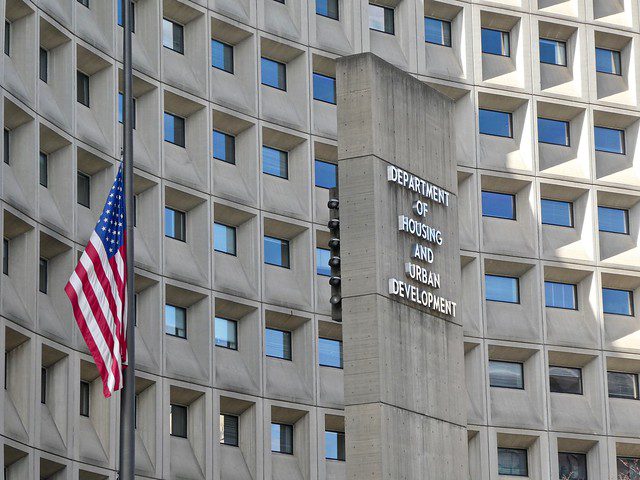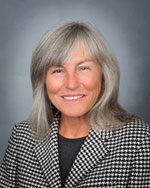IAF Challenges the South Bronx
Organizing the South Bronx, by Jim Rooney. 1995. Albany, NY: State University of New York Press. 283 pages. $14.95. (paper)
In November 1994, The New York Times and New York magazine both published lengthy stories touting the recovery of New York City’s South Bronx, long the national symbol for urban decay in the United States. Both stories emphasized the housing, both newly-constructed and rehabilitated, that has been produced since Presidents Jimmy Carter and Ronald Reagan visited Charlotte Street in 1977 and 1980, respectively, to bemoan its sad state, graphically portrayed in the 1981 film Fort Apache, the Bronx. The decline of the South Bronx has been attributed to the economic transformation of New York City, deliberate governmental policies and racism.
Jim Rooney focuses on a housing conflict in the South Bronx during the period 1989-1993. His book is a case study of the birth and life of the South Bronx Churches (SBC). A coalition of 45 churches, it was created in 1987 by organizers from the Industrial Areas Foundation (IAF), founded by Saul Alinsky. SBC was modeled on another similar IAF-initiated organization in Brooklyn, the East Brooklyn Churches (EBC), founded in 1979. EBC is best known as the creator of the Nehemiah program, a city-sponsored moderate-income, single-family housing ownership program since adopted by HUD. It was sympathetically portrayed in the book Upon this Rock: The Miracles of a Black Church.
Rooney seeks to answer the question of how successful SBC and IAF have been in addressing the housing problems of the poor in the South Bronx. SBC chose not to work with other established South Bronx community organizations which had previously sponsored nonprofit, low-income housing development, e.g., the South East Bronx Community Organization (SEBCO) and the Mid-Bronx Desperados (MBD). Instead, it decided to promote Nehemiah Housing and chose a site targeted for high-density, below-market housing sponsored by the New York City Housing Partnership (NYCHP). Eventually, a condo project called Melrose Place arose on this contested site.
In demanding that this, rather than many other vacant sites, be dedicated to Nehemiah Housing, SBC crossed swords with then-Mayor Ed Koch. In classic Alinsky style, Koch, along with the president of the borough of the South Bronx and the NYCHP became the enemy. The SBC lobbied Koch and later Mayor David Dinkins, who defeated Koch in 1990, to persuade city housing officials to change their plans. The issue had more to do with political power and, from SBC and its organizers’ viewpoint, empowerment of the poor than what type of housing was best suited for this part of the South Bronx.
Rooney gives a detailed, inside look at how IAF organized SBC and SBC’s unsuccessful campaign (including protests and a lawsuit). Rooney concludes that the city was right in its choice of housing for this site. On the other hand, SBC did succeed in promoting Nehemiah housing as part of the city’s housing plans for the revitalization of the South Bronx. The first of SBC’s several hundred Nehemiah homes began construction in 1995 (averaging $55,000 in price). SBC also claims credit for the South Bronx president’s willingness to allow greater citizen participation in the borough’s ambitious redevelopment plans (e.g., the proposed massive South Bronx Center).
Rooney concludes his book with nine ideas about community organizing that can be learned from the experience of SBC. Overall, Rooney sees SBC as successful. A broader analysis would compare the achievements in housing of SBC with other non-IAF organizations in the South Bronx like SEBCO and MRD.
For more information about Saul Alinsky and IAF activities read:
The Radical Vision of Saul Alinsky, by David Finks. 1984, Alfrod A. Knopf.
Let Them Call Me Rebel, by Sanford Horowitt. 1989, Paulist Press.
Cold Anger, by Mary Beth Rogers. 1993, University of North Texas Press.
Black Baltimore: A New Theory of Community, by Harold A. McDougall. 1993, Temple University Press (reviewed in Shelterforce #70, July/August 1993).
Upon This Rock: The Miracles of a Black Church, by Samuel G. Freedman. 1993, Harper Collins (reviewed in Shelterforce #70, July/August 1993).
Recommended Reading
The Community Collaboration Manual
This is a good resource for social service groups that want to work together in providing better services. It is not as helpful for groups interested in doing political advocacy or direct action organizing. $11.95 for non-members. Summary of additional publications available. Contact The National Assembly, 1319 F St., Suite 601, Washington, DC 20004.
Community Organizing: “How To” Videos
Produced by the Chicago Video project, the first two videos in this series, “Running Good Meetings” and “Accessing the Media,” are now available from Assisting Christians To Act (ACTA). Contact Assisting Christians to Act, 4848 North Clark St., Chicago, Illinois, 60640-4711.
Organizing for Advocacy
A brief and clear article that provides an overview of basic techniques and important information that anyone who organizes people for advocacy campaigns should know. The article is by Mauricio Vivero of the National Council of La Raza (NCLR) and appears in Volume XII, Number 3, 1994, issue of the Pacific Mountain Review (PMR). Much of the article was taken from the NCLR publication, Project ACT, Organizing for Advocacy: A Step by Step Plan of Action. PMR, 916-447-2854.





Comments